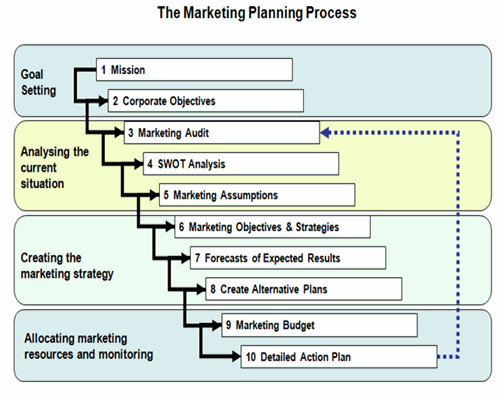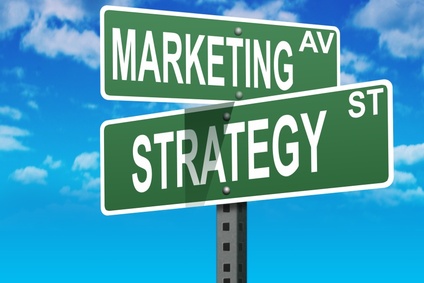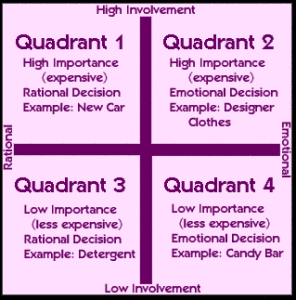Direct Marketing
Direct marketing is a combination of methods that facilitates marketing of goods and services by an organization directly to customers (business-to-customers or B2C). It is an active method of marketing that takes the item and services to probable customers instead of sitting tight for them to go to a store or other areas e of access. It is a type of ‘non-stop’ shopping and is once in a while alluded to as ‘exactness marketing’ or ‘one on one’ advertising. As opposed to the advertising firm conveying a general correspondence or sales message to a substantial gathering of potential customers, regardless of the fact that these constitute a very much characterized market area, direct marketing tends to target particular people or households (Dobkin, 2007). In a business-to-business (B2B) setting this would be an individual or a particular association or firm.
Direct marketing is a direct communication to a customer that is designed to create a feedback in the form of a direct request, a demand for more information or a visit the business places to buy a specific goods or services. It put emphasis on face to face marketing communication. It can also be said to be a process that is an interactive system of promotion that uses one or more promotion media to influence the response of the customer and transaction at any location. Its goal is the provision of information to customers about their taste and needs.
Direct marketing is not simply concerned with marketing correspondences. It is likewise concerned with the movement of goods and services. In utilizing direct marketing, the firm is settling on a decision to remove the utilization of marketing agents and offer the goods and services direct to consumers (Ellsworth, 2009). This has implications for both channels of circulation and logistical choices.
Direct has many forms. It is one of the quickest developing areas of advertising and is being accelerated by specialized advances, especially in the field of computer innovation (Ellsworth, 2009). Scholars and experts have brought up direct marketing with excitement and have driven the subject forward both mentally and for all intents and purposes.
Growth of Direct Marketing
Direct marketing is not new since many organizations have sold items direct to general society for a considerable length of time e.g. Kleeneze and Avon, who have sold items door to door for a long time. (Ellsworth, 2007) Regular postal mail through the post and mail request catalogs have been used for quite a while and all are types of direct marketing. Direct marketing started in the mid-1900s, and the Direct Marketing Association (DMA) was built up in the USA in the year 1917. Direct marketing turned into an imperative power in the UK in the 1950s, however at this phase of its advancement it was concerned with post office based mail, mail request and door to individual door offering. Today the extent of direct marketing has extended significantly to a great extent because of the utilization of the phone and specifically the utilization of the Internet (Ellsworth, 2009). Direct marketing incorporates all advertising interchanges components that permit an association to correspond directly with a prospect. This incorporates standard mail, phone advertising, direct feedback promotion, door to individual door offering and the Internet.
Party arrangement organizations have been offering items direct to consumers in individuals’ homes for a long time. The phone has been utilized for B2B deals for quite a while especially for the recovery of “scheduled” requests and for making deals arrangements. It is presently being utilized progressively as a part of local direct advertising programs regularly to ‘follow up’ a posted customized mail shot. Motoring associations, for example, the RAC and AA in the UK, have utilized direct individual offering for a considerable length of time to offer membership of their organization and today utilize post office based mail broadly to keep individuals educated about the item and the benefit of the service (Ellsworth, 2009). Nonetheless, as it has already been said, direct marketing has developed with the advances in computer innovation. The utilization of computers to store, recover and control client data has revolutionized the way direct marketing firms work. Direct advertising firms can make utilization of the Internet and systems databases which permits them to get to information “warehouses” and gives them the capacity to sort and total or “wire” information to build its worth as a marketing asset.
Objectives of Direct Marketing
Much of direct marketing actions are expected to subject to sales. However, in a few circumstances a Direct sale may be impossible or inappropriate. In such cases some other type of quantifiable responses may be utilized. For instance, a direct mail campaign and a phone marketing system may be utilized as a part of the engineering business to welcome and urge purchasers to go to a machine tool display. A flyer drop for double glazing may contain a free telephone number for the prospect to ask for a leaflet or evaluation. The outcome may not be a sale, but rather some particular, quantifiable activity that will ideally add to an extreme sale. In spite of the fact that a sale may not be the quick target of a direct marketing effort, some direct responses for the benefit of the beneficiary of the message will be (Ellsworth, 2009). Hence, this will add to the possible sale. Thus, direct marketing is not the same as direct sales. It may be utilized to keep customers educated of new item improvements or to send them particular discount offers.
Strategic Role of Direct Marketing
Direct Marketing ought not to be utilized as a simple strategic Marketing Communications device, yet should be incorporated with whatever remains of the communication blend. All promoting communication components interface to some degree. (Ellsworth, 2007) Direct Marketing is prone to frame a noteworthy piece of Communication Strategy of numerous organizations and not just shape a sort of strategic adjunct. Different types of communication are prone to be utilized as a part of conjunction with Direct Marketing Programs regardless of the fact that these are just broad corporate promoting programs. Numerous organizations utilize direct marketing overwhelmingly, however not to the rejection of other communication systems. Direct marketing is regularly utilized as a major aspect of incorporated customer relationship management (CRM) programs. CRM projects are by their tendency long haul and key in nature.
Phases of Direct Marketing
The following are the steps that need to be undertaken when performing a direct marketing to customers (Ellsworth, 2009):
- The imaginative stage and design stage, where the plan to market is developed, and relevant channels of communication are selected.
- Data collection, where both inner information, for example, customer records and outside information from a database of the organization or rundown broker is gathered in planning for the stage three in the project
- Database organization, where data is ‘mined’, ‘melded’, collected or disaggregated, improved and institutionalized for use in the system
- Database examination, or satisfactory tuning the database that further spotlights on an ideal target market
- Implementation and completion where client request and orders are followed up on and data on response rates are gathered from definite post program examination
- Response examination where the aftereffects of the campaign are inspected for viability before the cycle starts once more
Direct Marketing Media
While numerous individuals partner direct marketing with direct mail, direct mail is one of a few promoting media used by direct marketers. Other major direct advertising media incorporate the phone, magazines, daily papers, TV, and radio. New innovative improvements are giving direct advertisers an extended scope of decisions from video cassettes to home-shopping systems, interactive TV as well as the Internet.
Direct mail
Direct mail is the most vigorously utilized direct advertising medium and the one most direct advertisers learn first. Direct mail has been utilized to offer a wide assortment of products and administrations to buyers and additional organizations, and it keeps on developing in spite of postage increments. Direct mail offers a few points of interest over other media, including selectivity, personalization, adaptability, and test-ability. It permits organizations to target people with known buy histories or specific psychographic or demographic attributes that match the advertiser’s customer profile. Direct mail can be focused on a particular geographic territory given postal districts or other geographic variables. (Ellsworth, 2009) Personalization in the Direct mail means not just addressing the envelope to a man or family by name, additionally maybe including the beneficiary’s name inside the envelope.
Direct mail bundles come in all shapes and sizes, making it a standout among the most adaptable of the direct advertising media. A standard regular postal mail bundle incorporates an envelope, a letter, a handout, and a response gadget. The envelope’s occupation is to inspire the beneficiary to open the package. Despite the volume of mail, a man gets, the envelope must separate itself from other mail by its size, appearance, and any duplicate that may be composed on it (Ellsworth, 2007). The letter is a direct mail advertisement and gives the chance to address the intrigues and worries of the beneficiary straightforwardly. The letter normally spells out the advantages of the offer in the subtle element. While the letter informs the beneficiary concerning the advantages of the offer, the pamphlet shows them. Delineated pamphlets are utilized to offer administrations and, also, items. At last, the bundle must incorporate a response gadget, for example, an answer business card, that the beneficiary can send back. Response rates are for the most part higher when the response gadget is partitioned from, (Ellsworth, 2009) instead of a portion of, the pamphlet or letter. Without toll numbers are regularly conspicuously shown to permit the beneficiary to respond using the phone.

Direct mail is the most effectively tried publicizing medium. Each variable in fruitful direct advertising—the right offer, the correct individual, the right configuration, and the right timing—can be tried in standard mail. Computer advancements have made it simpler to choose a randomized name test from any rundown, with the goal that mailers can run a test mailing to decide the response from a rundown before “taking off,” or mailing, the whole rundown. Distinctive bundles containing diverse offers can likewise be tried. (Ellsworth, 2009) Other media permit some level of testing; however regular postal mail is the most advanced. In connection with the next direct advertising media, Direct mail is considered to offer the most financially savvy method for accomplishing the most noteworthy conceivable response. Telemarketing ordinarily creates a higher response rate, however at a much higher expense for each respond
Telephone-Based Direct Marketing
The utilization of the phone in direct marketing has developed drastically in the course of recent two decades. Users now may be equivalent, or even surpass, those of direct mail. Telemarketing may be outbound and inbound. Inbound telemarketing is called the servicing and more often includes taking requests and responding to request. Outbound telemarketing for purchasers may be utilized for one-stage offering, lead capability, and offering and overhauling bigger and more dynamic clients. In business, telemarketing can be utilized to reach littler records that don’t warrant an individual deals call and additionally to create, qualify, and catch up leads.
Telemarketing has the benefits of being close to home and intelligent. (Ellsworth, 2009)It is a successful two-way correspondences medium that empowers organization delegates to listen to clients. Phone sales representatives normally work from a script, yet the medium permits the adaptability of updating the script as required. It likewise considers up-and cross-offering. While clients are on the telephone, it is conceivable to build the measure of their requests by offering them extra decisions—something that tends to prompt perplexity in other direct marketing media.
Telemarketing likewise has its impediments. For instance, it is costlier than regular postal mail. It additionally does not have a changeless response gadget that the prospect can set aside or utilize later. It is not a visual medium—however, the innovation to make it one may soon be accessible. At long last, it is seen as meddling, producing buyer grumblings that have prompted authoritative activities to direct the telemarketing business.
Magazines
Direct responses print promotions in magazines must make a positive offer or demand that requests that the reader accomplishes something. Normally, such promotions require a reader to send in a coupon or answer card or call a without toll number. With well more than 2,000 purchase magazines now being distributed, magazine promotions permit direct advertisers to achieve groups of onlookers with identifiable hobbies. (Ellsworth, 2009)Notwithstanding publicizing vigorously in extraordinary premium magazines, direct advertisers use mass buyer magazines and exploit provincial promoting space to target particular gatherings of people.
Dissimilar to general publicists, who measure the viability of their print advertisements regarding span and recurrence, direct advertisers measure the adequacy of their print promotions as far as expense viability—either cost-per-request or cost-per-request. Magazine advertisements offer the upsides of good shading proliferation, a moderately long notice life (particularly contrasted with every day daily papers), and a lower expense. Imaginative expenses for magazine advertisements are additionally generally lower than for regular postal mail. (Dobkin,2007) Be that as it may, coordinate advertisers locate magazines’ long lead times, slower response, and scarcer space than standard mail to be a drawback.
Newspapers
While Direct Marketers publicize in magazines more than daily papers, daily papers have some distinctive focal points. These incorporate the assortment of areas offered inside of a daily paper, shorter shutting dates, a prompt response, and expansive scope of a substantial and different crowd. (Dobkin,2007) Weaknesses incorporate poor advertisement multiplication and the constrained accessibility of shading. Article substance can likewise have a greater amount of an antagonistic impact on promotion response than in magazines. Notwithstanding promoting in the general pages of a daily paper, direct advertisers additionally publicize in unattached supplements (FSIs) that are normally dispersed with the Sunday releases of daily papers.
Television
Direct Marketing on TV is expanding. Early cases of direct responses promotions on TV that ought to be well known to viewers incorporate those for blades, garden equipment’s, exercise gear, records, and books, which request that viewers bring in and request a particular item. Later advancements in direct response TV publicizing incorporate an arrival to a lengthier arrangement, regularly known as the infomercial, where an item or another offer is clarified in some point of interest over a period stretching out to 30 minutes or more. (Dobkin, 2007). Advocates of this arrangement point out that the most noteworthy length gives the promoter the chance to construct an association with the viewer and overcome introductory viewer suspicion, and in the meantime exhibit a persuading story spelling out item components and advantages in the subtle element.
Direct Marketing Lists and Databases
Lists are regularly utilized as a part of direct mail and telemarketing. The two essential sorts of records are response records and assembled records. Response records contain the names of the considerable number of prospects who have responded to the same offer. These people ordinarily share a typical hobby. (Dobkin, 2007) Names on a response rundown may incorporate purchasers, inquirers, supporters, progression club individuals, or sweepstakes participants. They may have responded to an offer from one of a few media, including post office based mail, TV, or a print notice. Response records are not as a rule leased; rather, they are an in-house rundown accumulated by a specific business. Gathered records are regularly leased by direct advertisers. Aggregated mass buyer, a specific customer, and business records are accessible for an extensive variety of hobbies.
Direct promoting databases are like mailing records in that they contain names and addresses, yet they go much further. They are the storehouse of an extensive variety of client data and may likewise contain psychographic, demographic, and registration information accumulated from outside sources. They frame the premise of direct promoting projects whereby organizations set up closer ties with their clients.
Database marketing got to be one of the popular expressions of the direct promoting industry in the 1980s, and it has kept on advancing in the twenty-first century (Dobkin, 2007). Whether it is called relationship marketing, significance promoting, or holding, the normal topic of database advertising is reinforcing associations with existing clients and building associations with new ones. Databases permit direct advertisers to reveal an abundance of pertinent data about individual buyers and apply that information to build the likelihood of a fancied response or buy.
Similarly, as with mailing records, there are two fundamental sorts of advertising databases, client databases, and outside databases. Client databases are ordered inside and contain data around an organization’s clients taken from the relationship-building procedure. Outer databases are accumulations of particular people and their qualities. These outside databases may be mass-ordered from open information sources; they may contain monetary information given private credit records; they may be aggregated from surveys; or they may be a blend of every one of the three sources.
Database Marketing, and particularly the possibility of utilizing private data for advertising purposes, has made security a vital issue in the Direct marketing industry. (Ellsworth, 2007) A few states have passed enactment constraining access to already open information or restricting the utilization of such information as car enrollments, records as a consumer, and medicinal data. The Direct advertising industry has endeavored to act naturally policing as to the utilization of touchy information. On the other hand, the battle between industry self-regulation and government regulation will most likely proceed for quite a while.
Advantages of Direct Marketing
Traceability and Quantifiable of marketing Viability
Direct Marketers offer the reached clients (potential or genuine) the chance to respond to the promoting communication, more often in a given period. (Nash, 2000) This helps advertisers to track the response rate and response classification (positive or negative) and get a ready examination, given which they can adjust or streamline their marketing endeavors and correspondence for better results in future.
Well organized approaches
Direct Marketing includes getting ready and keeping up a client database. (Nash, 2000) A database characterizes the objective portion into a limited gathering and every person in this limited gathering is spoken with through individual and direct correspondence stations, for example, phone, content, voice message, door-to-door correspondence, and so on. (Ellsworth, 2007)As it were, direct advertisers get a closer brush with their clients and in keeping their databases upgraded and staying in contact with their clients, such advertisers have a superior shot at altering their correspondence and conveying significant offers to just those clients who are well on the way to profit by it.
Less demanding Campaigns
Most direct marketing effort and correspondence are simpler and modest to plan and make. (Nash, 2000) Direct marketing channels, for example, messages and content additionally make making the correspondence snappier and less expensive contrasted with setting up gigantic hoardings and paying truckloads of money for notices that could conceivably be seen or heard by the intended interest group. This additionally makes it simpler for direct advertisers to dispatch test battles in new markets or sections as the expense and hazard are significantly lower.
Disadvantages of Direct Marketing
Hard to gain information vital to getting client database ready
While a client database is the spine of direct advertising and its vicinity is one of its greatest points of interest, obtaining such information may be a mammoth undertaking. (Nash, 2000) Not everybody may to take an interest in the business sector and client reviews and give out their own and expert points of interest. Additionally, information merchants and administrations that offer caught client information to advertisers likewise charge a high cost to part with such information. Along these lines, the introductory production of a database may be a significant tough assignment for an advertiser. Clients dislike nosy correspondence.
This is an undeniable disadvantage of direct promoting. Many people don’t like their inboxes, phone message boxes and cell phones to be overwhelmed with advertising and limited time content. (Nash, 2000) To cure this, individuals frequently utilize email and phone message channels and the advertiser’s correspondence either land straight in the SPAM envelope or gets erased without being opened by the focused on the client.
Limited Reach
While having a limited characterized gathering of target clients acts as a preference from multiple points of view by centering marketing efforts, this can likewise be a prohibitive component insomuch as the advertisers achieve stays constrained. (Nash, 2000) In spite of database overhauls and expansion of new clients, the scope of direct advertising can never touch the range of mass marketing routines.
Environment and Law
Different nations have laws against spamming and littering. (Nash, 2000) Direct advertising correspondence as flyers and flyers are inefficient practices as they advance lingering and utilization of paper.
Recommendation
Direct Marketing costs a great deal more than general purchaser media to achieve one thousand gathering of people individuals. Be that as it may, it is imperative not to judge direct advertising on the premise of a rough CPT correlation with other media. Keep in mind that direct ways to deal with individual buyers empower messages to be focused with noteworthy exactness, guaranteeing that the advancement goes just to those individuals well on the way to be keen on the substance of the message. (Ellsworth, 2007)This alone ought to be sufficient to raise doubt about the value of CPT correlations in assessing direct marketing.
Direct Media additionally convey publicizing messages and offering chances to potential buyers in the solace of their homes’. Responses are simple; generally, the buyer makes a phone call. At the point when direct channels are utilized, the messages have negligible competition for the shopper’s consideration from other promotions, the timing can be exactly controlled, and contenders will be less mindful of the crusade. However, most basic examination of media performance is the measure of response it creates.
In general consumer advertising, it is regularly hard to attribute battle results with total sureness to the publicizing, because different components may have been grinding away in any deliberate change, whether that is enhanced deals or expanded attention to an item on the objective business sector.
With Direct Marketing, contending media can be all the more surveyed for their adequacy by measuring the accurate level of response that they fortify. Here the measure is not the expense of coming to one thousand individuals from the gathering of people, yet the expense of getting only one of them to respond in the fancied way
Conclusion
Direct Marketing is a branch of advertising that has experienced fast development and mechanical change in the course of recent years. It is a vital marketing procedure, and a few associations construct their whole advertising methodology in light of direct promoting routines. (Ellsworth, 2007) Around the world, the Direct Marketing industry is enormous. As firms look to methods for getting more esteem from advertising spending plans, direct promoting is liable to wind up considerably more grounded later on. Direct promoting alludes to a gathering of techniques that permits organizations to correspond with, and get a Direct response, from prospects. It permits firms to target clients more decisively than traditional non-direct marketing procedures and is alluded to as exactness promoting.
Direct advertising procedures are continually being enhanced, and created, and new imaginative media are prone to be produced later on (Ellsworth, 2007). At present, the fundamental strategies utilized inside of the direct marketing industry are the utilization of the phone, regular postal mail, the web, direct ‘eye to eye’ individual offering and direct response publicizing utilizing TV, radio and daily papers, exchange diaries and magazines. The business is being driven by a craving for more noteworthy precision and economy in promoting operations and by advancements in IT that can be connected to direct marketing. Database promoting specifically has reformed the way associations utilize direct marketing and has expanded effectiveness in ranges like post office based mail and phone advertising. Direct advertising is not exclusively determined by IT. (Ellsworth, 2007) Some conventional strategies that were utilized as a part of 1917 when the Direct Marketing Association was established in the USA are as yet being utilized effectively, especially eye to eye direct individual offering. (Ellsworth, 2007) On the other hand, these strategies have profited from the data upheaval regarding recovery of client data and enhanced focusing on. Direct marketing is a noteworthy power inside of promoting and is prone to increment in future.
References
B.V, Elsevier. “Direct Marketing.” Journal of Research in Interactive Marketing (2009): Voulme 3: 58 – 59. Print.
Dobkin, Jeffrey. Direct Marketing Strategies: Forget Theory – Here’s What Really Works! Merion Station, PA : The Danielle Adams Publishing Company, 2007. print.
Ellsworth, Belinda. Direct Selling For Dummies. River Street: For Dummies, 2015. Print.
Nash, Edward. Direct Marketing: Strategy, Planning, Execution. New York: McGraw-Hill Education, 2000. Print.
John Wiley &. Sons, The New Direct Marketing: How to Implement A Profit-Driven Database Marketing Strategy. New York: McGraw-Hill, 1999. Print.




